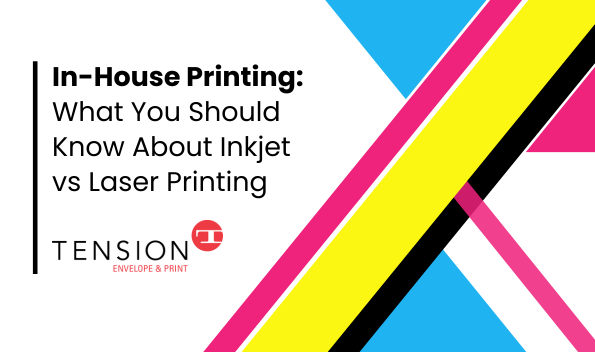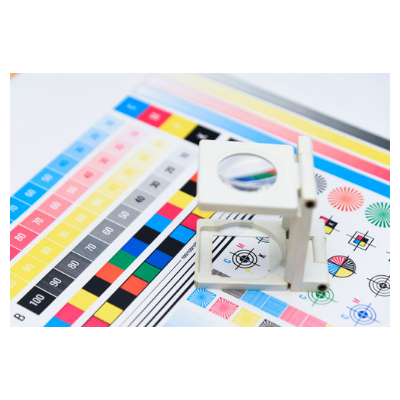Work with your print partner to get the most out of your in-house printer.
For some industries, such as statement processors or short-run direct mail printers, it makes sense to own equipment that allows for occasional in-house printing. Owning a printer allows for smaller, more targeted or personalized mailing, and can help cut down on costs.
It is increasingly more common to own equipment that can overprint static or variable data onto blank stock, and these printers are either inkjet printers or laser printers. So, what’s the difference between laser and inkjet printers, and what are special considerations when using either printer? To fully understand your print needs, let’s first go over the basics of laser and inkjet printers.
What Are Inkjet and Laser Printers?
Laser and inkjet printers differ in both their operation and print speed. The type of printing agent used and the way the content gets distributed onto the paper are different for each printer. These are factors that need to be accounted for before going to print.
Inkjet Printers
Inkjet printers use liquid ink and can print black and color simultaneously. They can print on larger formats and various types of surfaces. Inkjet printers work by dropping tiny ink droplets onto the paper to create the desired image. Inkjet printers are the best choice for clear, high-quality images with bold colors or more intricate details.
Laser Printers
Laser printers use toner instead of liquid ink. They work by charging the paper with electricity, and the negatively charged particles (the toner) are transferred onto the positively charged areas, creating the desired image. The toner then gets adhered to the paper with heat. Laser printers are known for their speed, which can aid those with tight deadlines.
Considerations for Inkjet vs Laser Printers
Depending on if you’re using an inkjet or a laser printer, there are design and structural options to take into consideration to ensure the best result possible. Additionally, the type of paper being used can significantly impact the final output quality, with factors such as weight, texture, and color playing crucial roles. Understanding the printer’s resolution and color reproduction capabilities is essential for achieving desired outcomes.
Design Considerations
Inkjet printers are ideal for bold and colorful designs. Consider a smooth, bright blank envelope stock that enhances the appearance of full-color printing. Laser printers excel in speed and are best suited for printing a lot of text or black and white designs.
Heat Considerations
With laser printing, there is heat involved and windowed envelopes need a heat-resistant patch on the window. Tension’s heat-resistance window film protects printers from heat-related jams or mishaps, ensuring reliable performance and efficiency. For more information on Tension’s heat-resistant window film and custom envelope solutions, visit our custom window envelopes page to explore our wide range of offerings.
Work With Tension
Whether you own a laser or inkjet printer, Tension’s blank envelope stock offerings can support both ink technologies equally. Tension is your single source for both blank stock envelopes and custom printed envelopes. To ask us about our product offerings, contact us to see which is the best fit for you.




